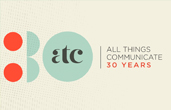Search engines are radically transforming the way users retrieve information: where, when and why are three adverbs that modern algorithms master very well by now. That’s why the concept of “context” has become crucial in SEO theories and practices.
The importance of the context in SEO is tied to content relevance whenever a specific search is run. Research and common practice, though, suggest that users’ patterns and ways of looking for and finding information (information foraging) are constantly changing. This in turn urges marketers to differentiate the way search traffic is acquired, in order to respond promptly to these changes.
Users’ intents and search phrases: how to intercept people’s information foraging
A good marketing strategy is that which starts from the study of consumers’ expectations and needs; similarly, a good digital and SEO strategy moves from people’s "search intents" when looking for a solution to a particular problem or need.
Search "phrases", which are made by keywords, are what gets users in touch with one possible solution. The keywords are divided into three main groups:
- Branded keywords
- Generic topic keywords
- Long tail keywords
Branded keywords: a privileged conversion channel
Users who look for something by utilizing the name of the brand are informed users in all likelihood - they know the brand and they have the search topic clear in mind. They tend to be very well focused on their query and they are more likely to convert.
The search engine matches the brand name with relevant words or phrases, which are included in the content of the brand’s website -these are the “indexed” terms.
All considered, positioning these pages on a search result page can be relatively simple, nonetheless this shouldn’t be a reason to disregard the quality of content on the website: the search engine, in fact, doesn’t promote keywords according to their density (the number of times they appear in the content), but instead according to the context.
This happens because the search engine is designed to show content which is relevant for the user’ query, not simply display pages where these words and phrases are included.
Generic keywords: the right balance between quality content strategies and ad campaigns
This second group of keywords usually generates almost half of the potential search traffic on a website. In this case, besides working on the context, (as it is the case with branded and long tail keywords), it’s important to differentiate the way to acquire users who have a generic search intent.
A good approach could be diverting part of the budget dedicated to quality content production to paid advertising campaigns. These campaigns should be based on pertinent ads - so that users are presented a clear, efficient SERP - linking to relevant pages on the website, the ones that detail out the topic of the search. For example, if a user searches “man watches”, an ad by a jewellery shop shouldn’t link to the website’s homepage, but rather to its man’s watches category page.
Long Tail Keywords: at the heart of quality content
Long tail keywords are very specific keys, which should be naturally included into the quality contents of a website. When it comes to promoting quality contents, search engines are usually facilitated; nonetheless, as it’s the case with brand keyword, it’s crucial to build a context around keywords, through effective and SEO-oriented copy.
This context doesn’t depend solely on the website, but also on traffic coming from external, possibly influential links.







